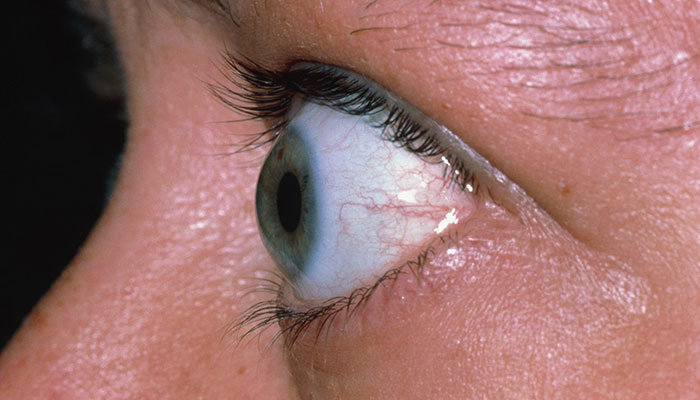A blood disorder occurs when your red blood cells, white blood cells, platelets, or blood clotting proteins do not work properly. In this article, we aim to provide information on the causes of blood disorders, some types of blood disorders, and available treatments.
What are Blood Disorders?
Blood is composed of solid and liquid components. The solid component is composed of red blood cells, white blood cells, and platelets. On the other hand, the liquid component, referred to as plasma, is made up of water, salt, and protein. Blood disorders are diseases that affect the blood’s ability to function properly. There are many different types of blood disorders and symptoms vary depending on the type of blood disorder. Most blood disorders reduce the amount of blood cells, proteins, platelets, or affect their function.
Types of Blood Disorders
- Anemia: Deficiency of healthy red blood cells in the blood.
- Idiopathic Thrombocytopenic Purpura (ITP): Abnormal decrease in the number of platelets in the blood.
- Leucocytosis: Elevated white blood cell count.
Common Symptoms of Blood Disorders
Tiredness: The body is deprived of oxygen due to a deficiency of red blood cells, resulting in fatigue.
Shortness of breath: Difficulty in breathing may be caused due to a deficiency in the number of red blood cells capable of transporting oxygen throughout the body.
Pale skin: Paleness may be caused due to decreased blood supply to the skin.
Irregular heartbeat: Low haemoglobin levels make the heart work harder to transport oxygen, causing irregular heart rhythm.
Dizziness: Red blood cell count decreases, which limits the flow of oxygen to the rest of your body, resulting in dizziness.
Bruises: Bruising can happen for no apparent reason or even after a minor injury.
Chest pain: When your heart isn’t getting enough oxygen, it can cause chest pain.
Cold hands and feet: Iron deficiency can lead to a decrease in blood circulation throughout the body, resulting in cold hands and feet.
Causes of Blood Disorders
Medical conditions: Diseases such as chronic kidney disease, infections, cancer, or rheumatoid arthritis may lead to blood disorders such as anemia or leucocytosis.
Side effects of certain medications: Certain antibiotics and anti-inflammatory drugs may cause hemolytic anemia.
Lack of certain nutrients in diet: Low red blood cell count may be caused due to deficiencies in iron, folate, vitamins B12 and A.
Genetic: Most blood disorders, such as sickle cell anemia, are caused by mutations in certain genes that can be inherited from your family.
Understanding Blood Disorders in Ayurveda
In Ayurveda, Blood is referred to as ‘Rakta’ and it classifies blood as one of the 7 Dhatu (body tissues). Blood disorders are caused by an imbalance of the doshas, particularly Pitta, due to a decrease in digestive fire, poor dietary habits, as well as physical and psychological stress. Let’s delve into this perspective:
Pitta Dosha: Pitta is responsible for digestion, metabolism, vision, body temperature, etc. An aggravated Pitta may lead to blood disorders.
Treatment and Management
Treatment options for blood disorders aim to alleviate symptoms and improve quality of life. These can include:
Blood and platelet transfusions: Increase the amount of red blood cells in patients with severe cases of anemia. Additionally, platelet transfusions are used to address blood clotting problems.
Anticoagulants: Prevent blood from clotting.
Growth factor supplementation: Induces the bone marrow to produce additional red blood cells and white blood cells in the body.
Corticosteroids: Suppresses the immune system of the patient.
Palliative care by SGP’s PSA aims to improve the quality of life for patients with long-term blood disorders by:
Symptom management: Providing relief from symptoms including weakness and chest pain, with medications.
Psychological support: Helping individuals cope with the emotional consequences of living with a blood disorder through counselling and support groups.
Education and self-care: Providing individuals with knowledge about their health and lifestyle changes to effectively manage their blood disorders.
Conclusion
Due to the wide variety of blood cell disorders, the experience of living with one may vary greatly from person to person. Usually, blood disorders cause symptoms such as tiredness, dizziness, and difficulty breathing. They are much easier to treat and manage, if diagnosed early. If you would like to learn more about your blood cell disorder, consult a healthcare provider who can provide you with guidance and treatment options that are specific to your individual needs.
FAQs about Blood Disorders
-
Blood disorders are typically diagnosed through blood tests, which can measure the levels of various blood components such as red blood cells, white blood cells, and platelets. Other diagnostic methods may include bone marrow biopsies and genetic testing.
-
Eating foods such as dates, raisins, moringa leaves, beets, sesame seeds, pomegranate, etc. can help improve hemoglobin levels. Supplementing diet with certain herbs and spices, such as turmeric and ginger, can aid in digestion and nutrient absorption.
-
Some blood disorders such as nutritional anemia and aplastic anemia can be prevented or their risk reduced through a healthy lifestyle, including a balanced diet, regular exercise, and avoiding exposure to toxins.
-
Most blood disorders such as anemia and hemophilia are not contagious. They are typically caused by genetic or non-communicable factors. However, some infections that affect the blood, such as HIV or hepatitis, are contagious.
-
Yes, blood disorders can have systemic effects on the body. For example, anemia, a common blood disorder, can lead to fatigue and affect various organs due to reduced oxygen transport. Similarly, clotting disorders such as thrombophilia can cause abnormal blood clots in different organs, leading to serious complications such as heart attack or stroke.





